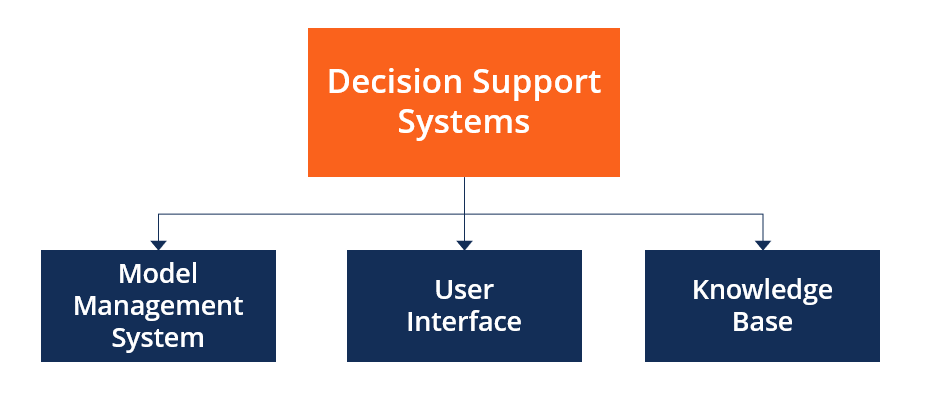As a business leader, how many decisions do you have to make in a day? With employees to manage, customers to care for, and investors to answer to, you probably have to make more decisions than you think.
Some decisions will come easily to you, of course, and your own experience will help you determine the best course of action for a particular situation. However, there may be other situations where help is needed. You may need information that will support you with your financial decision-making, for example. Or it might be that you need help in determining what to do when serious business issues arise such as those related to a disciplinary investigation.
Your life can be made easier if there are people that you can talk to and rely on for help. Your life can also be made easier if you implement decision support systems (DSS) into your business.
What Are Decision Support Systems?
A decision support system is a computerized program that analyzes large volumes of data to help business leaders (and their personnel) make the right judgments in certain situations. The information acquired can lead to better decision making, and this negates the risk of any bad choices that could lead to serious consequences.
This is one reason why businesses use DSS technologies, the other being efficiency. As decisions in business can sometimes take days, weeks, and even months depending on their complexity, having software that can help manage these are be essential. Time can be saved, problems can be solved, and decisions can be made in an informed and timely way.
What Does a Decision Support System Consist Of?
Typically, a DSS will consist of three parts: a knowledge base, a model management system, and a user interface.
The knowledge base is implemented within the DSS database. It usually contains information from both internal and external sources and acts as a library of information to support the various managerial processes that are present in the business.
The model management system is composed of various mathematical models that are designed to analyze data and predict real-world outcomes. Such models could be used for scientific research, weather forecasting, financial projections, and many other purposes, depending on the need of the business.
The user interface is a dashboard or some other kind of interface that can be accessed by the user. From here, they will be able to interact with data, manipulate it to assess various outcomes, and view the results that will support them in their decision-making.

What Can a Decision Support System Be Used For?
Any organization that needs to analyze and synthesize data to assist in its decision-making can benefit from a DSS. The information they acquire can help them produce reports that project revenue, predict inventory turnover, and create action plans that can move their business forwards. These are just a few examples as a DSS can do this and much more.
A DSS can be broken down into five different categories:
1: Data-driven DSS
A computer program that uses both internal and external data to discern patterns and trends, and to predict future events.
The data used to shape information received can help the user make better decisions. Such data could be related to inventory management, marketing outcomes, and various aspects related to the payroll process.
2: Model-driven DSS
A computerized system that uses various different models to assist with decision-making.
These can include statistical, financial, simulational, and multi-criteria-based models. Their purpose is to analyze any situation where decisions need to be made, such as customer lending choices for banks and credit companies.
3: Knowledge-driven DSS
A knowledge-driven DSS is a computer-based reasoning system that uses information already consistent with the company’s knowledge base.
With access to expert information already entered into the system, the user will be better able to problem-solve when carrying out their required responsibilities.
4: Communication-driven DSS
Communication-driven DSS is a category of DSS that uses communication technologies, such as instant messaging, email, and voice chat to improve communication and collaboration for people working on a shared task, no matter their geographical location.
It can be used in conjunction with other useful communication tools, such as those that offer speech recognition within an ASR system.
5: Document-Driven DSS
Document-driven DSS is a type of information management system that incorporates the use of set documents, such as corporate records and company policies to support the needs of decision-makers.
What Are the Benefits of Decision Support Systems?
The obvious benefit is the ability to make more informed decisions. This applies to those people in mid- or upper-level management who need to make weighty company decisions, but it also applies to lower-tier employees, especially those within project management roles.
A DSS can also:
- Increase the speed and efficiency of decision-making
- Improve the skills of employees needing to use a DSS
- Automate complicated managerial processes
- Free up the time of decision-makers
- Improve interpersonal communication within an organization
- Enhance key areas of a business, such as those related to customer support, financial management, and report writing
What Are the Disadvantages of a Decision Support System?
Organizations can use a DSS within a variety of different contexts, depending on their business processes and their designated targets. The advantages far outweigh the disadvantages although it is still important to consider any downsides.
These include:
- Cost. Implementing a DSS can be expensive, which makes it less accessible to any smaller business unable to make a large capital investment
- Over-reliance. A DSS is supposed to enhance human decision making and not take it away entirely
- Information overload. A DSS will consider all aspects of a problem. This is a good thing but it can lead to confusion and indecision if the user is left with multiple choices. In such instances, it is still wise to seek advice from other team members
Take the Guesswork Out of Decision-Making
Should you invest in a DSS? If a lot of guesswork is involved in your decision-making, then the answer may be yes, especially if you have the means and financial resources to implement something in your business.
Continue your research online and consider the various options open to you, as you should be able to improve many of your business processes if you have the DSS technology on hand to help you make the wisest choices.





